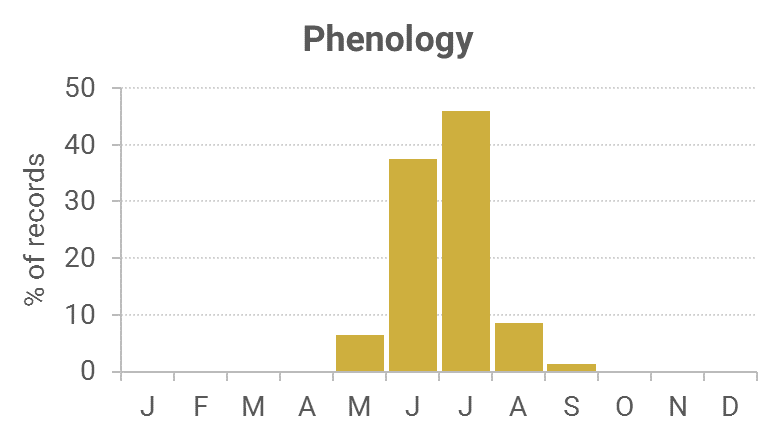Identification
The brown, curved cross-lines will separate it from Common White Wave.
Recording method
Easily disturbed from willows by day, comes to light.
Life Cycle
One generation. Overwinters as a pupa at ground level. Larvae are present during July to October at varying sizes.
Larval foodplants
Larvae feed on willows and poplars.
Habitat
Woodland, often wet.
History
First recorded for Dumfries and Galloway in 1862 for VC72 near Dumfries by Lennon where ‘it was common around the Dumfries area’, in 1906 for VC74 at Corsemalzie by Gordon who said it was ‘scarce at wood sides at dusk’ and in 1942 near Gatehouse of Fleet by Russell.








